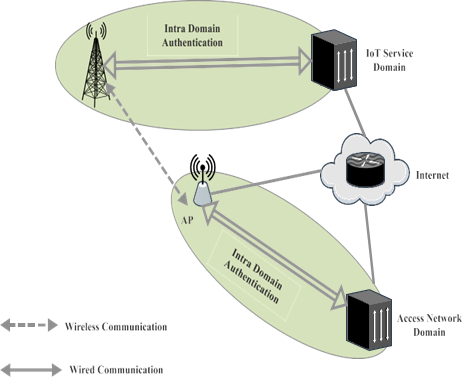Physiological Conditions Monitoring System Based on IoT
Main Article Content
Abstract
Internet of Things (IoT) comprises smart devices, sensor nodes, and wearable elements for data sharing and services, through which the sensor networks are used for developing smart environments. IoT models are growing very fast because of the rapid growth of wireless devices and communications. In addition, the heterogeneous nature of the IoT paradigm heightens the risks to both individuals' data privacy and their data's security. As a direct consequence of this, comprehensive security models are required in order to guarantee secure communication between the various devices. The biggest obstacle in the way of effective and reliable device interaction in the Internet of Things is security.
Article Details
References
Abdul Rahman, Reem Shah, Babar. (2016). ‘‘Security analysis of IoT protocols: A focus in CoAP.” 1-7. 10.1109/ICBDSC.2016.7460363.
D. Halabi, S. Hamdan, S. Almajali, ‘‘Enhance the security in smart home applications based on IOT-CoAP protocol,” digital-information,-networkingand-Wireless-communications.-(DINWC),-Beirut,-2018,-pp.81-85.doi:
1109/DINWC.2018.8357000.
Hussain Fatima, Hussain Rasheed, Hassan Syed, Hossain Ekram. (2019). ‘‘Machine Learning in IoT Security: Current Solutions and Future Challenges”.
J. Mišic´ , V.B. Mišic´ , Proxy cache maintenance using multicasting in CoAP IoT domains, IEEE Internet Things J. 5 (3) (2018) 1967–1976, https://doi.org/ 10.1109/JIOT.2018.2818115.
Marco Lobe Kome, Frederic Cuppens, Nora Cuppens-Boulahia, Vincent Frey ‘‘CoAP Enhancement for a Better IoT Centric Protocol: CoAP 2.0” 2018 Fifth International Conference on Internet of Things: Systems, Management and Security, Vol. 00, 139-146, 2018.
M.B. Tamboli, D. Dambawade, ‘‘Secure and efficient CoAP based authentication and access control for Internet of Things (IoT),” 2016 IEEE International Conference on Recent Trends-in-Electronics, Information-&-Communication Technology (RTEICT), Bangalore, 2016, pp. 1245-1250.
N. Neshenko, E. Bou-Harb, J. Crichigno, G. Kaddoum, N. Ghani, Demystifying IoT security: An exhaustive survey on IoT vulnerabilities and a first empirical look on internet-scale IoT exploitations, IEEE Commun. Surveys Tutorials 21 (3) (2019) 2702–2733, https://doi.org/10.1109/COMST.2019.2910750.
Victoria Beltran, Antonio F. Skarmeta , ‘‘An Overview on Delegated Authorization for CoAP Authentication and Authorization for Constrained Environments (ACE) ” in Editor (‘Book Security analysis of the constrained application protocol in the Internet of Things’ (IEEE, 2017, edn.), pp. 163-168.
Wail Mardini, Muneer Bani Yassein, Mohammad Alrashdan, Abdalraheem Alsmadi, Ahmad Bani Amer ‘‘Application-based Power Saving Approach for IoT CoAP Protocol ” USA, 5 pages, 10.1145/ 3279996.3280008.

